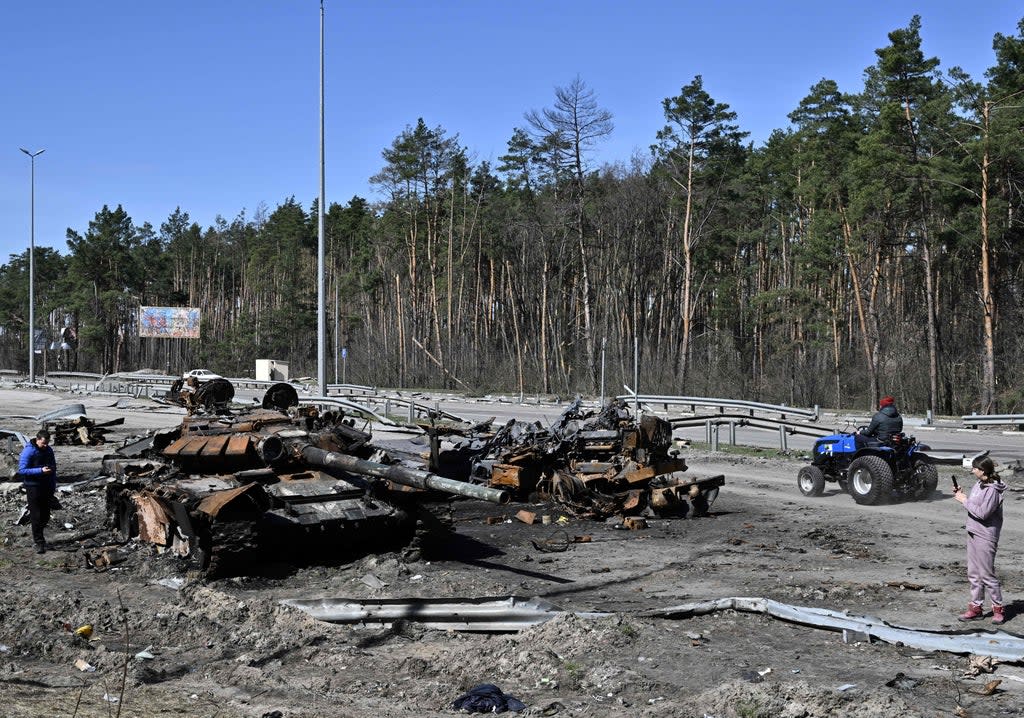Vladimir Putin’s military chief moves towards war zone to try to boost Russian advances on Donbas

Vladimir Putin’s military chief General Valery Gerasimov is thought to be going forward towards the war zone because Russia’s military campaign in eastern Ukraine is struggling so badly, western officials said on Friday.
The move by Gen Gerasimov, Chief of General Staff of the Russian Armed Forces, is thought to be an attempt to inject “momentum” and “authority” into the Russian advances in the Donbas region of eastern Ukraine.
In some areas, they are believed to have slowed to one kilometre a day.
“There are credible reports that he is going to go forward,” said one western official.
“In overall terms, it does show the continuing command and control challenges that the Russians are having.
“We saw (Alexander) Dvornikov put in overall command.
“If Gerasimov has come forward, even if not to take command but in order to get some momentum behind the assaults and the attacks, that’s a real statement of the challenges which Russian forces are facing in the Donbas.
“We are yet to see confirmation as to quite what role he is going to play but the idea that you would send the head of your military forces forward to take control, were that to be the case, that would be another acceptance of the overall failure of their operations.
“I think it most likely, though, that Dvornikov will likely remain the Commander-in-Chief for these operations and that Gerasimov is there to impose authority and insert momentum into the move.”
Gerasimov played a major role in Mr Putin’s military campaigns since he commanded an army in the Chechen War of 1999, and played a key role in military planning for Ukraine, as well as in the annexation of Crimea in 2014.
Mr Putin has refocused his military campaign on the Donbas after his lightning invasion plan, which included seizing Kyiv within days, failed.
Thousands more Russian troops have been poured into this region of eastern Ukraine and they are making limited advances.
“We are still seeing some progress but we are seeing relatively slow progress, in some instances perhaps as little as a kilometre a day in terms of terrain which they are taking,” said the western official.
He added: “What we are seeing within those operations is a really indiscriminate use of firepower.”
So while Russian forces were being “smarter” in using artillery to support ground forces, they were unleashing onslaughts putting civilians at risk.
“There is not a building in some of those villages which is being left intact after these sort of artillery bombardments,” said the western official.
“The level of violence and the level of risk and the indiscriminate use of firepower is really quite remarkable in terms of these Russian assaults.”
The rate of Russian casualties is believed to have slowed after Mr Putin refocused his military campaign on the Donbas, which includes Donetsk and Luhansk areas controlled by Moscow-backed separatists.
But where Russian troops are engaging Ukrainian forces they are reported to be suffering “quite high” losses.
When they reach major urban centres, Russian casualties may “spike” as they try to fight their way in and get “bogged down” in these areas, said the official.
Ukrainian fighters, no longer having to defend Kyiv and northern Ukraine, are re-equipping and recuperating.
While Ukraine’s armed forces are suffering some losses they are “not on the sort of scale” of Russian troops and are not believed to be hitting morale in the same way, the official added.

 Yahoo Movies
Yahoo Movies 
